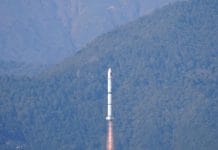Industrial Production Index (IPI) fell for the second straight month in September (-0.5% YoY; Aug: -0.3%), slightly below consensus (-0.1%) but far lower than the house forecast (2.8%).
Kenanga Research’s Economic Viewpoint cited today (Nov 8) that the weaker performance was mainly due to the high base effect recorded last year, which is expected to last until September. This also reflects a slowdown in the global economy as pent-up demand eased while appended by the impact of a higher interest rate environment.
Growth momentum MoM (1.1%; Aug: 2.8%) moderated but remained positive for the second month, while overall, the IPI stagnated in 3Q23 (0.0%; 2Q23: -0.3%) during the quarter on a YoY basis, mainly due to the high base effect recorded in 2Q22 (12.2%).
Meanwhile, the manufacturing index rebounded marginally (0.4% YoY; Aug: -0.6%) after three months of contraction since June following a high base effect recorded in 2022 and supported by domestic-oriented industry
The rebound in growth was mainly supported by the domestic-oriented manufacturing sector, which expanded to 5.9% (Aug: 4.2%) led by expansion in non-metallic mineral basic, basic metal & fabricated metal (8.0%; Aug: 4.0%) and food, beverages & tobacco (5.0%; Aug: 3.8%).
Meanwhile, the export-oriented sector (-2.0%; Aug: -2.6%) remained weak, led by electrical & electronic products (-2.0%; Aug: -3.5%).
The MoM (2.2%; Aug: 5.1%): growth moderated but remained positive for the second month, while for 3Q23 (-0.1%; 2Q23: 7.3%) it fell marginally to an eight-quarter low due to the high base effect recorded last year.
Electricity index growth expanded to a three-month high in September (2.5% YoY; Aug: 1.9%)where the MoM (-4.0%; Aug: 0.3%) fell sharply to a three-month low. The sectors 3Q23 (2.0%; 2Q23: -0.2%) growth rebounded to a four-quarter high.
2023 manufacturing index growth forecast retained at 1.0% (2022: 8.2%)
Kenanga expects the manufacturing downturn to ease from October onwards as the high base effect dissipates.
Nevertheless, they keep a cautiously optimistic outlook, following a subdued PMI reading in October (46.8; Sep: 46.8), while the impact of the higher interest rate environment in the advanced economies may continue to weigh on external demand.
Likewise, Kenanga maintains their 2023 GDP growth forecast at 3.5% – 4.0% (2022: 8.7%) as they expect slower growth in the 2H23 (3.1%; 1H23: 4.2%) particularly weak 3Q23 (1.7%; 2Q23: 2.9%) final numbers which slated to be released next week.
Note that the Department of Statistics released its advanced GDP estimates of 3.3% a few weeks ago.
However, Kenanga believes growth will remain supported by a resilient domestic demand, as reflected by a steady and lower unemployment rate as well as a steady improvement in the tourism and transport sectors.









